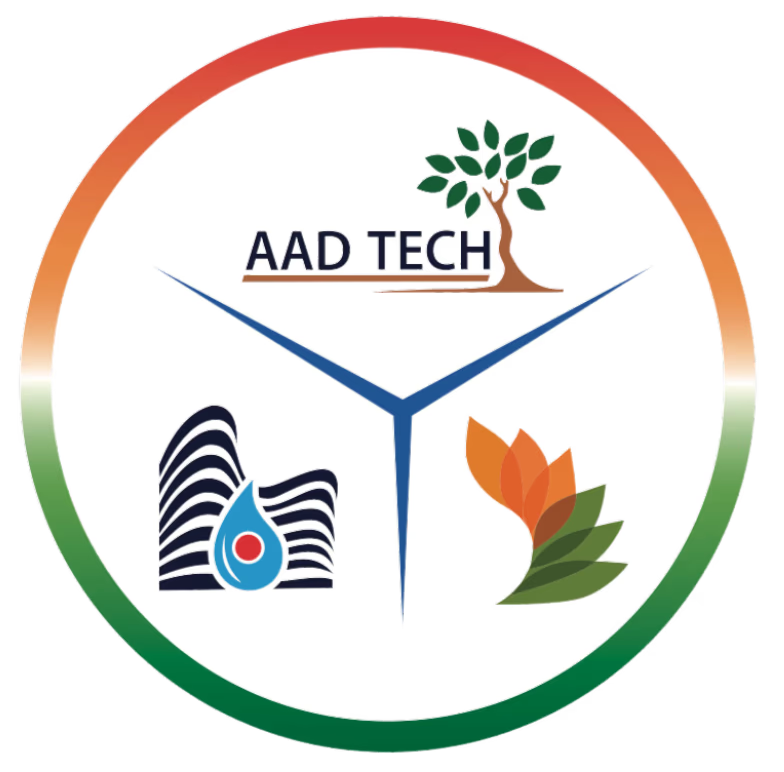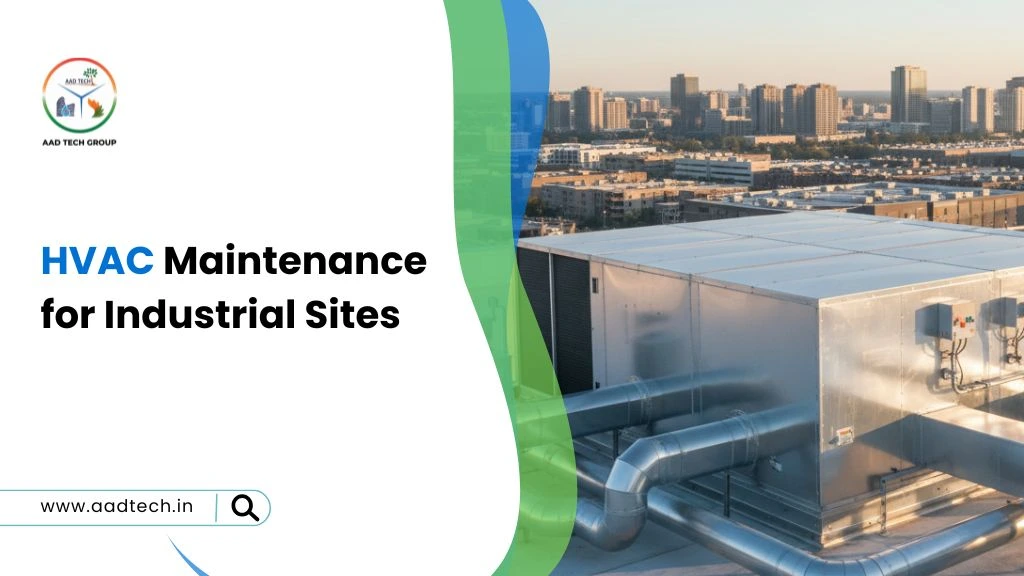A high-performing HVAC system is essential for maintaining comfort, indoor air quality, and operational reliability in commercial and industrial buildings. Whether it supports critical environments like pharmaceutical cleanrooms or large commercial spaces such as offices and malls, system efficiency depends heavily on consistent maintenance.
At Aad Tech, we help organisations strengthen HVAC performance through audits, preventive maintenance, and energy-efficient upgrade strategies. Here are practical HVAC maintenance tips that significantly improve system reliability and reduce operating costs.
1. Perform Regular Filter Inspections and Replacements
Air filters prevent dust and debris from entering the HVAC system. As they clog, airflow decreases, forcing fans and coils to work harder. Regular filter checks are one of the simplest yet most impactful maintenance activities.
We recommend:
- Monthly filter inspections in commercial and industrial environments.
- Replacing filters when pressure drop exceeds manufacturer guidelines.
- Using high-quality, low-resistance filters for efficient airflow.
Clean filters extend equipment life and help maintain consistent indoor air quality.
2. Check Airflow and Duct Conditions
Air distribution problems are common in large facilities. Leaky or poorly insulated ducts can significantly reduce cooling efficiency and cause uneven temperature zones.
Key maintenance steps:
- Inspect ducts for leakage and insulation damage.
- Measure static pressure before and after key components.
- Ensure dampers operate smoothly and are positioned correctly.
Balanced airflow helps your HVAC system maintain comfort while consuming less energy.
3. Clean Evaporator and Condenser Coils
Coils play a crucial role in heat exchange. Dirt buildup reduces thermal efficiency, increases compressor load, and raises energy consumption.
Best practices include:
- Cleaning evaporator and condenser coils every 3–6 months.
- Using coil-safe cleaning products to avoid corrosion.
- Straightening bent fins to restore proper airflow.
Regular coil cleaning supports stable temperature control and lower energy bills.
4. Inspect Fans, Belts, and Motors
Fans and motors form the mechanical backbone of airflow. Over time, belts loosen or crack, bearings wear out, and misalignment causes vibration.
Our standard fan and motor checks:
- Belt tensioning and alignment verification.
- Lubricating bearings as required.
- Monitoring vibration and noise levels for early fault detection.
Proper fan and motor maintenance improves system reliability and reduces energy loss.
5. Test Sensors, Thermostats, and Control Logic
Modern HVAC systems rely on sensors and automated control logic to regulate temperature, humidity, and ventilation rates. Faulty or uncalibrated sensors cause unnecessary runtime, overcooling, and energy waste.
We focus on:
- Annual calibration of temperature, humidity, and pressure sensors.
- Reviewing the Building Management System (BMS) logic.
- Ensuring ventilation and economiser controls respond correctly.
Proper control calibration results in stable performance and optimised energy use.
6. Maintain Condensate Drains and Pans
Clogged condensate drains can lead to water overflow, microbial growth, and AHU shutdown.
Routine maintenance includes:
- Clearing drain pans of sludge and sediment.
- Ensuring drain lines have the correct slope.
- Using anti-microbial treatments where necessary.
Clean condensate lines prevent hygiene issues and system downtime.
7. Look for Energy-Saving Retrofit Opportunities
Even with perfect maintenance, older HVAC systems lose efficiency over time. Retrofitting specific components can produce immediate gains.
Common retrofit improvements include:
- Upgrading to EC fans for better efficiency.
- Installing VSDs for dynamic fan speed control.
- Integrating high-efficiency motors and heat recovery units.
Energy-efficient upgrades help reduce operational costs and support sustainability goals.
Learn more about how static pressure impacts HVAC efficiency
8. Schedule Comprehensive Annual Maintenance
An annual full-system inspection ensures long-term HVAC reliability. It allows technicians to identify hidden issues before they escalate.
A comprehensive annual maintenance session typically includes:
- Deep cleaning of AHUs, fans, and ducts.
- Refrigerant level checks and leak detection.
- Electrical safety checks.
- Reviewing complete system performance data.
This holistic approach keeps the HVAC system aligned with the facility’s operational needs.
Conclusion
HVAC maintenance is a combination of routine checks, precise control calibration, and timely upgrades. From filters and coils to fans and sensors, each component plays a role in system reliability and energy efficiency. At Aad Tech, we support commercial and industrial clients by providing well-structured maintenance plans and retrofit solutions that improve performance, ensure comfort, and reduce energy waste.
Frequently Asked Questions
Quarterly servicing with an annual deep inspection is ideal for commercial systems.
Filter replaement has one of the highest impacts on HVAC efficiency.
Clean coils, correct airflow, updated controls, EC fans, and VSD-based retrofits.
Causes include duct leakage, blocked airflow, dirty filters, or faulty sensors.
Yes, we offer detailed HVAC performance assessments along with retrofit services.

